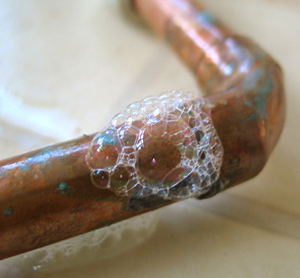- Home
- About Us
- Inspection Services
- Conventional Non-Destructive Testing
- Ultrasonic Weld Scan
- Ultrasonic Thickness Gauging
- Eddy Current Testing
- Radiography Testing
- Liquid Penetrant Testing
- View More

Leak testing is a highly precise means of leak detection and is used to locate and quantify leaks in a wide variety of industries and applications including valves, vessels, heat exchangers, seals, flange connections, tubes, steam turbines and condensers, vacuum systems, distillation towers and many other systems and components.
Leakage is a flow of material either out of an orifice or through a material (permeation). It is an admission or release of media. Generally, leak testing is the measurement of the amount of media leaking through material over time. There are different methods used to measure the amount of released media, and various media can be used as tracer gas. The tracer gas testing determines the change in concentration or an actual leak rate of a tracer gas on the lower pressure side of a test part. Typical tracer gases are helium, hydrogen or SF6.
Selecting the best leak test method is actually an economic decision that balances the cost of meeting the leak test specifications within the conditions and requirements of production. While leak testing may look to be a simple procedure, the process involves a combination of both science and skills. The operator must ensure the equipment is functioning properly and the process is highly dependent upon the operator’s experience.
In PWHT Solutions we provides in-house and leak test field testing services using certified personnel according to guidelines embodied in EN473 and ASNT-TC-1A and/or ISO9712.
Preferred for destructive testing (pressurize to burst).
Performs superbly for testing at pressures above 500PSI.
Simulates “real-world” conditions for parts designed to contain or pass fluid.